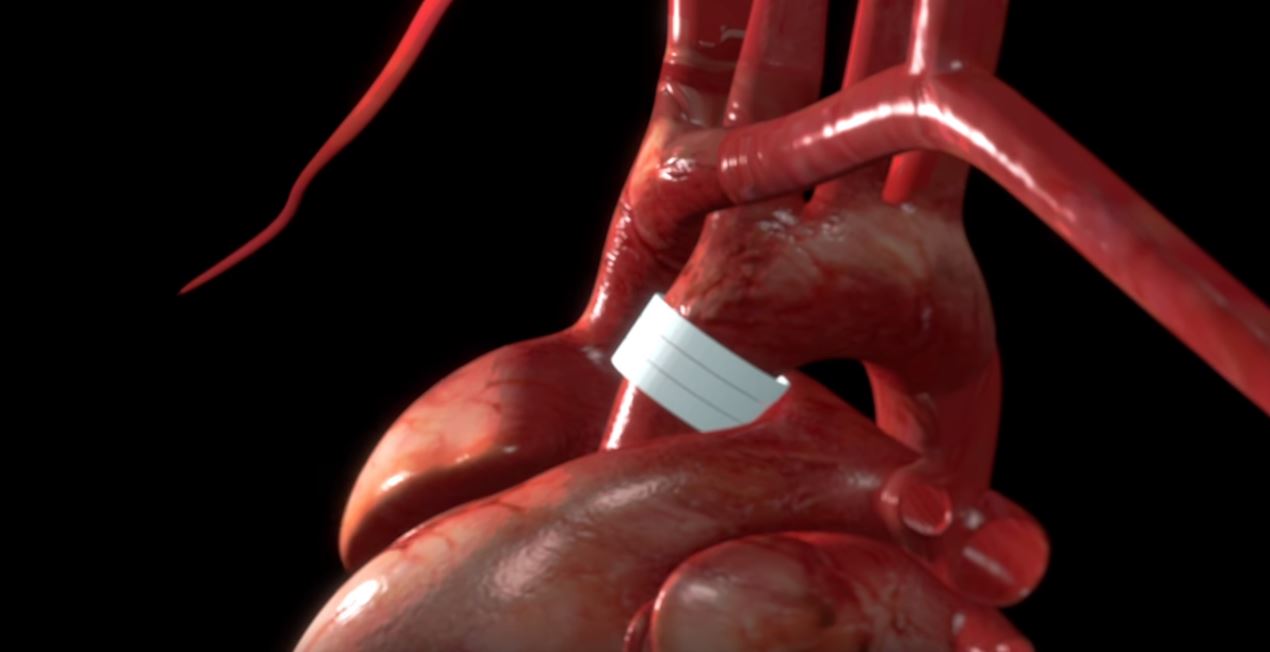Researchers at Switzerland’s École Polytechnique Fédérale de Lausanne (EPFL) have developed a new approach to supporting weakened hearts that they say will dramatically reduce some of the inherent risks of existing methods employed during cardiac recovery. Specifically, the design of their solution eliminates direct contact with blood, meaning there is little chance of hemolysis.
Named Dielectric Electro Active polymer (DEAP), the device is comprised of three rings. In a video posted by the EPFL, Jonathan Chavanne, a PhD student working on the project, explains, “The material consists of a thin silicone film with a thickness between generally 20 and 50 micrometers and an electrode output on each side of the film.” When an electrostatic force is applied, the electrodes move towards each other, squeezing the polymer.
To aid in cardiac recovery, the polymer is shaped into a cylinder and placed around the aorta where it meets the left ventricle. The three rings are set up in series and contract in turn, creating peristalsis that should move the blood through the artery, supplementing the pumping of the heart.

(Image credit: École Polytechnique Fédérale de Lausanne video)
Because the system is around the aorta, researchers note there will be no actual contact with the blood. This will eliminate the risk of excessive hemolysis, a complication that necessitates debilitating blood transfusions, compromising the recovery process.
Yves Perriard, the director of the EPFL’s Integrated Actuators Laboratory, notes that the absence of valves and other components used in current methods to provide cardiac support doesn’t just lessen the possibility of hemolysis. It also makes the insertion and removal of the device significantly easier for surgeons.
Another highly touted benefit to the DEAP is the lack of wires through the skin to power the device. Magnetic energy transmitted from outside the body keeps the unit operating.
While promising, the device is still in the prototype stage, and the EPFL acknowledges there is a great distance to travel before it can be used with patients. Efforts are underway to enhance the device’s performance ahead of running tests using fluids with properties similar to that of blood.
The video posted by the EPFL can be viewed below.




